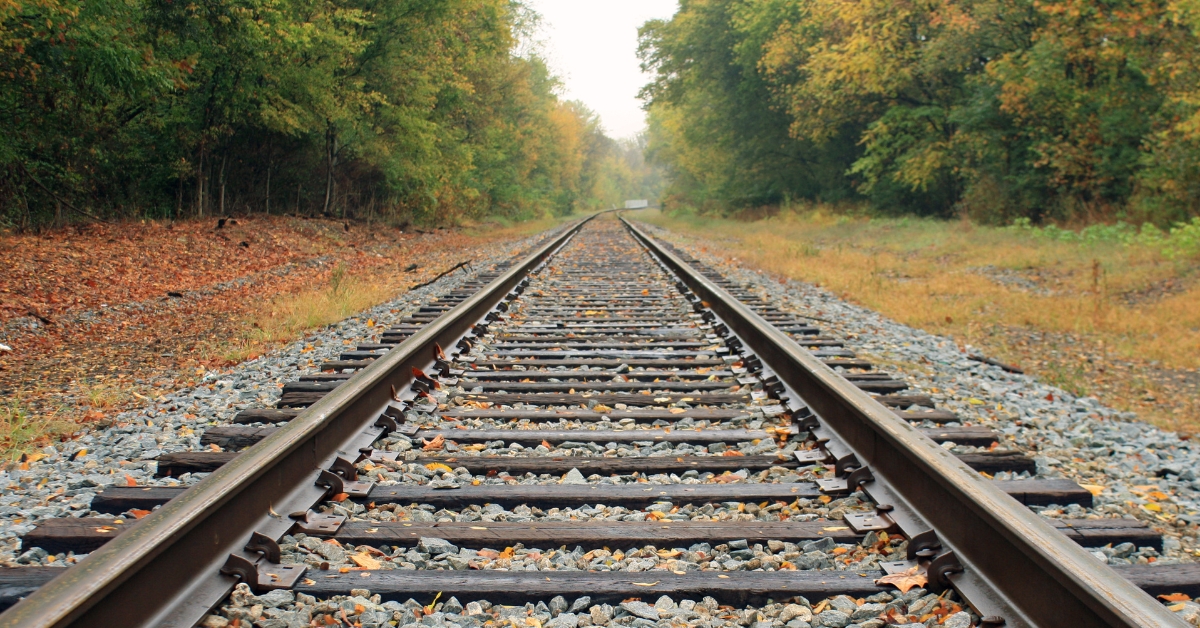In automotive manufacturing, efficiency and cost savings are the name of the game. Every decision you make regarding your rail services has the potential to translate into significant savings and smoother operations.
Whether you’re researching to optimize your transportation budgets or are a seasoned player in the industry, the key to success lies in mastering the art of cost management for inbound and outbound rail services.
To ensure your raw materials and finished vehicles move seamlessly across the country, we’re diving deep into cost management strategies for inbound and outbound rail services to help unlock benefits and streamline logistics.
Understanding Cost Components
Inbound Rail Services
Raw Materials/Components Transportation
Inbound rail services transport raw materials and components fundamental to production. For instance, steel, plastic components and engine parts must be transported from suppliers to manufacturing facilities in the automotive industry.
The cost components include the fees associated with loading these materials onto railcars, as well as the actual transportation costs and unloading fees at the destination facility. Efficient transportation ensures these critical materials arrive on time and in good condition, minimizing production delays.
Handling and Storage
Beyond transportation, costs are incurred for handling and storing materials at different points in the supply chain.
These costs may include expenses related to handling materials at rail yards and storage costs at both the supplier’s and recipient’s facilities.
Effective handling and storage procedures are essential to prevent damage and ensure that materials are readily available when needed.
Service Provider Fees
Rail service providers may impose various charges, such as freight rates, demurrage fees (for delays in unloading railcars) and accessorial charges for additional services like railcar switching or warehousing. Understanding these fees is a crucial part of cost management.
Outbound Rail Services
Finished Vehicle Transportation
On the outbound side, the primary cost component is transporting finished vehicles from manufacturing plants to dealerships or distribution centers.
This process includes loading vehicles onto railcars at the manufacturing facility and their transportation to the desired destinations.
In the automotive industry, this could involve transporting brand-new cars from an assembly plant to dealerships across the country. Understanding this process is crucial to minimize transit times and costs while protecting vehicles from damage.
Loading and Unloading
The loading and unloading process is integral to outbound rail services, adding another cost layer to manage.
Loading vehicles onto railcars requires careful handling and secure anchoring to prevent damage during transit.
Unloading at the destination points also involves costs and should be conducted precisely to maintain the vehicle’s condition.
Service Provider Charges
Like inbound services, understanding the charges imposed by rail service providers on the outbound side is crucial for cost management. These charges may include freight rates for transporting vehicles, handling fees for loading and unloading and any additional services required.
Pay close attention to these charges and work with reputable service providers to negotiate favorable terms aligned with your budgetary constraints.
According to the Association of American Railroads, rail transport’s fuel efficiency — with the ability to cover nearly 500 miles per gallon of fuel and be three to four times more efficient than trucks on average — translates to substantial cost savings by significantly reducing fuel and operational expenses for businesses in the automotive industry.
Understanding and managing these cost components in both inbound and outbound rail services can optimize transportation budgets and ensure the efficient flow of materials and finished products within the automotive industry.
Key Cost Management Strategies
Negotiating Competitive Rates
The Art of Rail Service Negotiation: Successful negotiation in rail service contracts is a skill that can lead to more favorable terms and rates. It involves discussions between the buyer and the rail service provider, where both parties seek mutually beneficial agreements.
Leveraging Market Dynamics: Understanding market dynamics, such as supply and demand, competition and economic conditions, is essential. It allows buyers to adapt to changing market conditions and secure competitive rates and terms.
Implementing Efficient Routing
Optimizing Rail Routes: Efficient routing focuses on finding the most direct and cost-effective path for cargo transportation. Completing this process includes considering factors like distance, rail infrastructure and transit times, all aimed at minimizing costs and ensuring timely deliveries.
Reducing Detours and Delays: Minimizing unnecessary detours and delays is crucial to prevent added expenses and maintain the efficiency of rail transportation. Strategies may include optimizing loading and unloading processes and addressing congestion issues at rail yards.
Load Optimization
Maximizing Cargo Capacity: Load optimization aims to use the total capacity of each railcar without compromising safety. It requires careful planning of cargo placement, weight distribution and load securing to transport more goods in a single shipment.
Reducing Empty Railcar Shipments: Strategies to minimize empty railcar shipments can save costs and contribute to environmental sustainability. This process may involve coordinating return trips with outbound shipments or finding opportunities to fill empty railcars.
Technology and Data-Driven Decision-Making
Advanced Logistics Software: Modern logistics software enables data-driven decision-making by providing tools for cost analysis, real-time tracking and performance assessment. It assists in monitoring operations and identifying cost-saving opportunities.
Real-Time Tracking: Real-time tracking and performance assessment tools offer insights into operations by helping monitor cargo movement, track delivery times and proactively address potential delays to ensure cost efficiency.
Long-Term Partnerships
Building Trust and Collaboration: Building long-term relationships with rail service providers fosters collaboration and mutual understanding. These relationships allow for close cooperation to understand unique needs, address challenges and negotiate favorable terms.
Negotiating Long-Term Contracts: Long-term contracts offer price stability and potentially more favorable terms. They can reduce uncertainty, making forecasting transportation costs and budgets easier.
Such agreements are valuable in industries with predictable transportation needs like manufacturing, retail, pharmaceuticals, and consumer goods, ensuring stability and effective cost planning.
These strategies empower buyers to take a proactive approach to cost management and optimize the transportation of materials and finished products via rail services.
Challenges and Considerations
Addressing Potential Challenges
Market Fluctuations
Market fluctuations are shifts in supply and demand, economic conditions or competition that can impact rail service costs, so it’s crucial to develop strategies to help navigate fluctuations and maintain cost control.
This may involve proactive rate negotiations with service providers during periods of high competition or exploring options like consolidating shipments to reduce costs when demand is low.
Regulatory Changes
When regulations shift, they can affect everything from safety standards to environmental requirements. To address this challenge, staying updated on regulatory changes and exploring their implications for cost management is essential.
Adjusting transportation practices to align with new standards, investing in compliance-related technology or equipment and ensuring that all operations adhere to the updated regulations are all helpful tools to help weather changes.
Environmental Considerations and Sustainability
Sustainability is an increasingly important aspect of cost management, especially in rail services. Environmental responsibility benefits the planet and can result in cost savings and operational efficiency.
According to the United States Government Accountability Office report on surface freight transportation, rail transportation has significant environmental sustainability advantages over trucking and waterways regarding air pollution, climate change and noise factors, with lower costs per ton-mile.
“As the most fuel-efficient way to move freight over land, freight railroads actively invest in infrastructure, equipment and technology and deploy sustainable business practices to reduce their carbon footprint and build a more resilient network for a future shaped by climate change,” according to the Association of American Railroads.
Addressing environmental considerations involves adopting sustainable practices, such as optimizing routes to minimize emissions, reducing waste and resource usage and exploring eco-friendly railcar technologies.
Embracing sustainability in rail services aligns with global environmental goals and contributes to long-term cost savings, making it an integral part of cost management.
It’s about balancing cost-efficiency with a commitment to environmental stewardship.

How FLEXRail Addresses Your Challenges
In automobile manufacturing, every move counts. Once an assembly plant crafts the perfect vehicle, the journey is only half complete.
The voyage across the country demands a delicate touch, a trip that FLEXRail, a premier rail logistics solutions provider, perfects for its clients.
So, what sets the FLEXRail experience apart?
FLEXRail Technology: With process automation, we eliminate manual tasks and streamline workflows, resulting in cost savings and error reduction.
Our real-time yard visibility tools provide insights into assets, shipments and workforce activities, allowing informed decision-making.
Intermodal Transportation: By seamlessly transitioning between various modes, such as rail, trucking and waterways, we optimize your transportation budgets while ensuring that your raw materials and finished vehicles move seamlessly across the country.
Decades of Industry Expertise: With more than four decades of experience handling a broad range of commodities, we’ve helped customers in every major industry improve the effectiveness of their rail transportation efforts.
FLEXRail understands the unique requirements of vehicle transport. Utilizing rail cars designed explicitly for shipping automobiles, we streamline the transfer process, ensuring efficiency and safety from start to finish.
Addressing Market Fluctuations, Regulatory Changes and Sustainability
Our proactive approach allows us to offer flexibility and strategic insights to help you manage costs effectively.
Whether the market experiences fluctuations in competition or new regulations are introduced, we have the knowledge and resources to adjust transportation strategies accordingly.
FLEXRail’s attention to detail extends to sustainability practices. By optimizing routes, minimizing emissions and reducing waste, we contribute to eco-friendly rail transportation. Our rail cars designed for finished vehicles are efficient and environmentally responsible, aligning with your sustainability goals.
Ready to Optimize Your Rail Transportation?
With FLEXRail by your side, you can confidently navigate the challenges of the automotive industry. Our commitment to excellence, attention to detail and unwavering dedication to efficiency make us the partner of choice for auto giants like you.
Contact us today if you have questions or want to know more about our services. Take the next step towards seamless rail transportation.



0 Comments